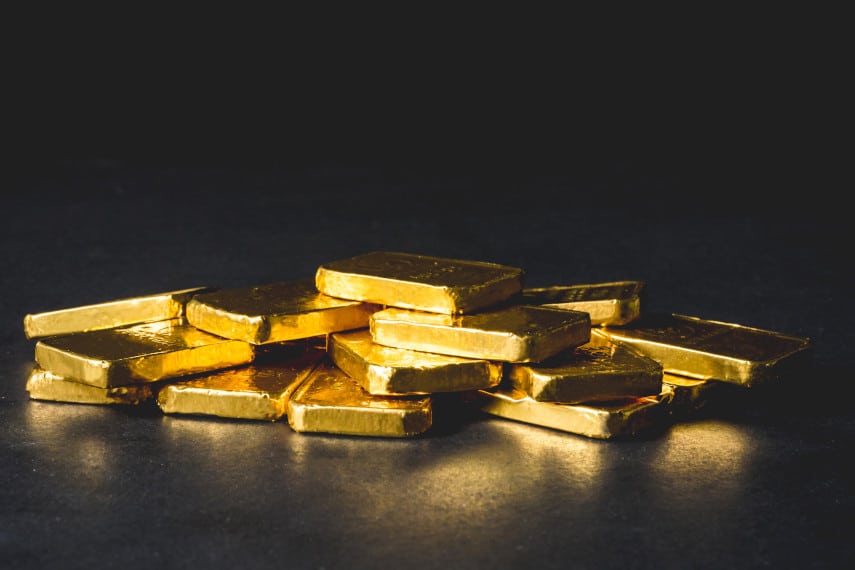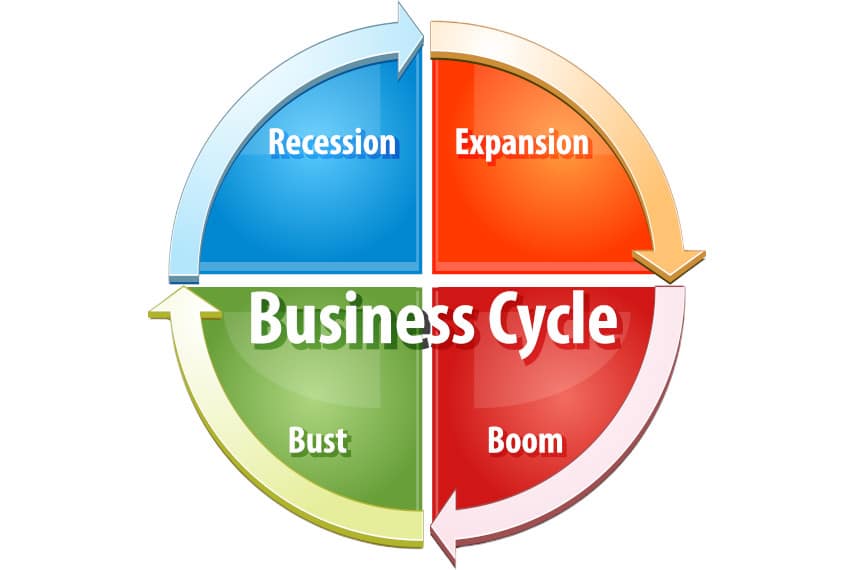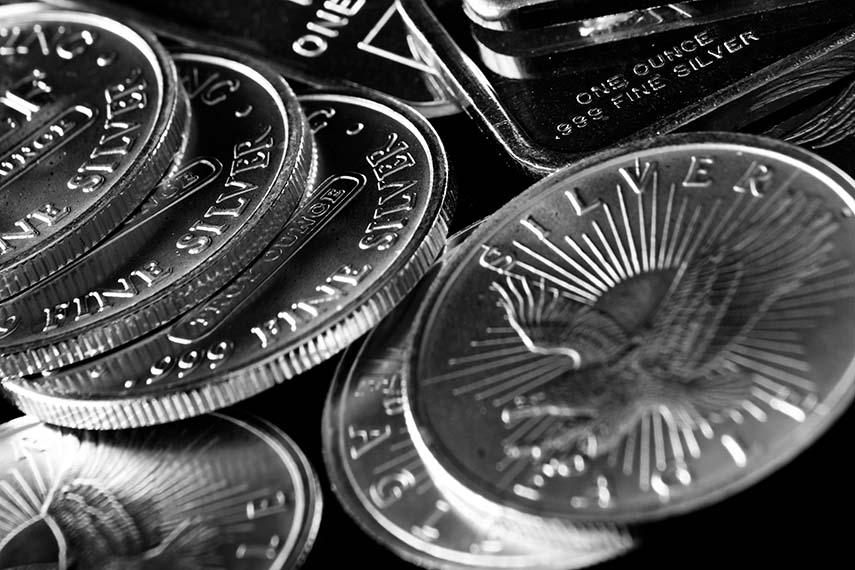
With the US economy in recession and fears of a 2008-style crisis growing all the time, investing in gold has become far more popular for many investors. But because investing in gold isn’t something that most people do regularly, and coverage of gold in media that cater to investors is cyclical, there are numerous first-time gold investors who may not know the ins and outs of gold markets, how to invest in gold, and more.
Like any other investment asset, you can make mistakes when investing in gold, and that can cost you time, money, and effort to fix. Before you start investing in gold, it can help to learn more about the asset you’re about to purchase. These four facts about investing in gold can go a long way toward making sure that your experience investing in gold is a positive one.
1. You’ll Always Pay a Premium for Gold
Many investors look at the spot price of gold and assume that they’ll be able to buy an ounce of gold for that price, but that’s not the case. The spot price of gold is the price per ounce of a 400-ounce Good Delivery bar. There aren’t many individual investors who have the money to be able to afford such a bar, nor would many investors want to buy a bar that large.
For the coins and bars that are most popular with investors, mostly weighing one ounce and under, investors will have to pay a premium. And the smaller the coin, the higher the premium you’ll pay. In that way, investing in gold is just like buying milk at the grocery store. The smaller the quantity you buy, the greater the price per ounce you’ll pay. If you pay $4 for a gallon of milk, you’ll probably pay $2.50 for a half gallon and $1.50 for a quart, not $2 and $1 respectively.
Gold’s premium is also influenced by demand, and during times of high demand or when supplies of gold coins and bars are hard to come by, the premium you’ll have to pay for gold coins will increase as well.
With COVID-19 having disrupted minting operations at several large mints, and with investing in gold having become more popular, increased investor demand has led to shortages of many gold coins, and premiums on gold coins have risen accordingly.
2. Gold Needs to Be Stored
No matter how you go about investing in gold, you’ll have to find a way to store it. If you buy gold coins from a coin store, you might store them at home, either in a drawer or a safe. But that puts them at risk of theft. You may feel that’s worth the risk if you have just one or two coins, but if you start buying larger amounts of coins, you’re putting your assets in danger.
You could also rent a safe deposit box at your local bank. But in the event of a bank failure or a bank holiday, good luck getting your assets when you need them.
If you’re investing in gold through a gold IRA, which allows you to use tax-advantaged retirement savings to invest in gold, you’re going to have to store gold with a custodian, just as you would with any asset that you invest in through an IRA. No matter how you decide to invest in gold, you’ll need to store it, and that storage will have a cost.
It’s up to you to decide how much storage you’ll need, how secure you want it to be, and how much you’re willing to pay for it. But that storage is a necessary part of investing in gold that you as the investor need to be aware of.
3. Paper Gold vs. Physical Gold
Some investors don’t want to have to deal with the physical storage issues that come with investing in gold. They want an easier way to invest in gold, a way to benefit from gold’s price growth and stability, but without the cost of having to store gold. That has given rise to a new class of assets that are often referred to as paper gold, versus physical gold such as coins and bars.
a. Gold Certificates
In the not too distant past, gold was still the backing for most world currencies, and gold coins were minted freely by countries around the world. But because of the weight of gold coins, many people had long since stopped carrying them around for commerce, preferring instead to use gold certificates.
These certificates, issued by commercial banks, central banks, or governments, promised to pay the bearer in gold coin on demand. Thus, they were “as good as gold” and treated as such in everyday commerce. As Americans found out the hard way in 1933, however, gold certificates weren’t the same thing as physical gold coins. And when President Franklin Delano Roosevelt outlawed private ownership of gold, those gold certificates could no longer be redeemed for gold coins.
Some investing outfits today may offer similar methods of investing in gold, allowing investors to purchase gold certificates that are supposedly backed by gold. But those certificates aren’t really anything more than a promise that there is gold somewhere backing them. Do you know for sure that the gold is actually there?
When selling such certificates, who can actually buy them? They’re not a liquid asset with a worldwide marketplace like physical gold coins and bars are, which means you’re basically forced to sell them back to the issuer. And that could cost you. Remember that when it comes to investing in gold, physical gold that you actually own will always trump paper gold.
b. Gold Mining Stocks
Some investors like to buy the stocks of gold mining firms, thinking that as the price of gold increases, so too should the value of stocks in firms that mine gold. But that isn’t always the case. Mining firms bring their own problems to the table, such as corporate governance issues, labor disputes, the high energy cost of mining, and the cost of environmental remediation. Those all can negatively impact the stock price of mining companies, so that even if gold were to triple in price overnight, the value of mining stock shares could still sink.
That’s not to say that stock in gold mining companies can’t form part of a well-diversified investment portfolio. As part of your stock investments, mining company stock can certainly help diversify your assets and hedge your risk. But if you think that investing in mining stocks is a one-to-one corollary with investing in gold, you’re going to be disappointed.
c. Gold ETFs
Exchange-traded funds (ETFs) have become a very popular investment trend in recent years, allowing investors to expose themselves to commodities, funds, or shares that they otherwise wouldn’t have access to. ETF shares are traded on conventional exchanges, giving them a very liquid market and widespread availability.
Gold ETFs allow investors to purchase shares in funds that claim to own gold. Each share is not a share of gold or a claim to a certain amount of gold, but a share in the fund itself – and the problems with gold ETFs are numerous.
Once again, you have to trust that the fund actually owns the gold it claims. With networks of custodial and sub-custodial relationships, where that gold is and whether or not it is encumbered in any way is nearly impossible for the average investor to ascertain.
There’s also the issue of potential share inflation, in which funds could create ever more shares in the fund without a corresponding increase in the amount of gold the fund owns.
Finally, because ETFs are a fund and traded on exchanges, they incur exchange listing fees, fund management fees, and more. Those fees can eat away significantly at any gains ETF shares may make. Once again, the costs and uncertainty of paper gold make it an inferior choice in many respects to physical gold.
4. Which Type of Gold to Invest In
Once investors have decided to invest in physical gold, the choices available to them can be numerous. Deciding which form of gold to invest in can be overwhelming, especially since not every gold coin or gold bar is a good fit for every investor.
a. Numismatic Coins
Numismatic coins are those that have collector interest or that derive their value not from the value of their metal content but rather from their rarity, historical value, or collector demand. Think of Roman Empire gold coins, medieval gold coins, or rare error coins. These coins are considered collectibles by the federal government for tax purposes, which complicates your ability to invest in them.
Also considered numismatic would be coins graded by professional grading services such as PCGS, NGC, ANACS, etc., and “slabbed” by these companies, meaning they have been certified at a certain grade and placed in a plastic holder, often with an accompanying serial number and holographic seal. The value of these coins is based purely on collector demand, not on metal value, and their value could rise or fall completely independent of what the gold price does.
More importantly, collectible coins are not eligible for investment through a gold IRA, and any attempt to use IRA assets to purchase collectible coins would be considered a distribution from the IRA. So, investors who want to use their tax-advantaged retirement assets to invest in gold coins need to do their research so that they don’t buy the wrong type of coins and incur taxes and penalties.
b. Bullion Coins
Precious metal coins that are purchased solely or primarily for the value of their metal content are often referred to as bullion coins, to distinguish them from numismatic coins. These coins range from older gold coins minted when gold still circulated as money, to newer coins intended primarily for investing in gold and for gold IRAs. But here too, investors need to be careful.
In order to be eligible for investment through a gold IRA, gold coins need to meet certain minimum standards of fineness or be affirmatively approved for investment through a gold IRA. That typically means a minimum fineness of 99.5% gold. Older gold bullion coins were typically minted to a 90% fineness, or in some cases a 91.6% (23 karat) fineness, making them ineligible for investment through a gold IRA. So, when it comes to investing in gold coins, you need to choose wisely.
c. Bullion
Investing in gold doesn’t have to mean buying gold coins, it can also mean buying bullion, which is produced by numerous mints and assayers around the world. Bullion is a generic term that normally refers to precious metals in their unminted form, such as bars or ingots.
Gold bars have their place in an investment portfolio too and, while they may lack some of the beauty of a nicely designed coin, if you’re just interested in investing in gold for the returns your investment will offer, gold bars will suffice.
Here too, you need to pay attention to the fineness of your bullion investments. Only gold bars with a minimum fineness of 99.5% are allowed for investment through a gold IRA, so you’ll want to make your choices carefully.
Taking the Next Steps to Invest in Gold
Hopefully these four facts can help you make more informed decisions when you begin investing in gold. And if you have any other questions about investing in gold or the benefits of a gold IRA, get in touch with the experts at Goldco.
With nearly a decade of experience helping thousands of investors invest in gold to protect their retirement savings, Goldco’s representatives can help you make sense of investing in gold and to make gold an important and productive part of your investment portfolio.






